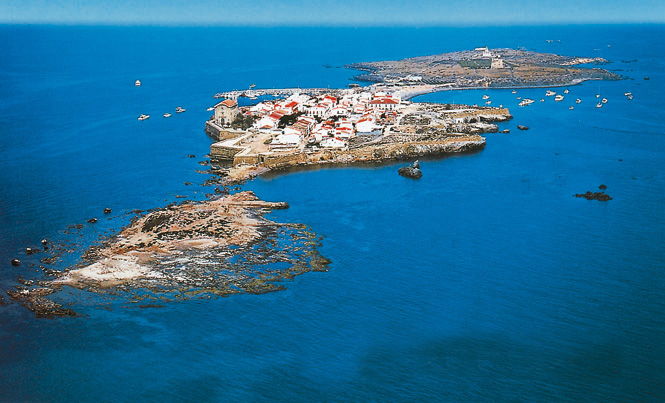
The island of Tabarca is the largest inhabited island in the Valencian Community and the smallest in Spain. Tabarca Island is managed by the City of Alicante and is quite a unique destination attracting the interest of visitors to the area. It lies approximately 10 km south of Alicante close to Santa Pola. Some would debate that even calling it an island as it only measures 1800m in length and 400m wide but Tabarca is much more than a simple rock. Although small, people do live there and as a destination it offers an ideal refuge for a weekend getaway especially in the off season, a fantastic opportunity to enjoy its tranquillity and beautiful views.
It’s size and uniqueness has made it an important tourist attraction and can receive up to 3000 visitors a day in the peak season, one of the reasons why it is better to go in the off season, however this quaint romantic island is a wonderful choice all year round. The climate is very similar to Alicante, having an average yearly temperature of 18º C. One can reach the island from the mainland by ferry from Torrevieja, Alicante or Santa Pola, the closest, from where it only takes 30min to get there. Tabarca is a quiet fishing village offering an old fort, several fresh seafood restaurants, a rocky beach with clear turquoise water, several coves and tidal pools ideal for bathing. Everything you would want within walking distance.
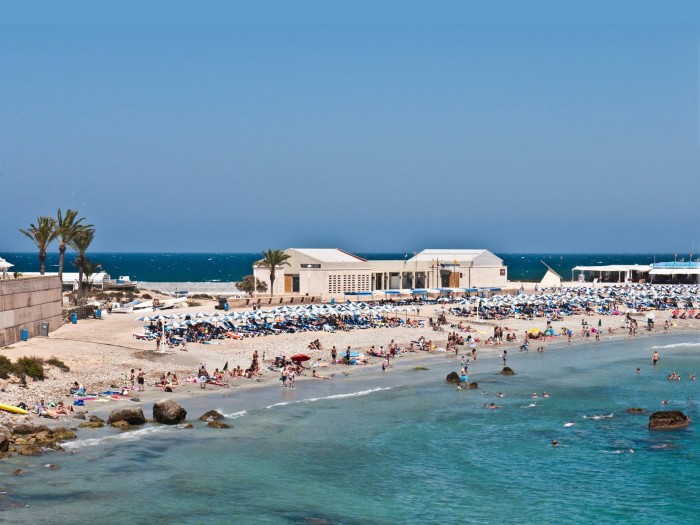
Before 1700, the island was known as Illa de Sant Pau ('Saint Paul's Island') or Illa Plana ('Flat Island'). Believed to be the island that St. Paul disembarked on, the island was a refuge for Barbary pirates up to the end of the 18th century.
It was originally a part of the Republic of Genoa A group of Genoese sailors shipwrecked near the coast of Tunisia, mostly coming from the islet off Tunisian Tabarka, were rescued and settled there. The uninhabited islet was renamed Nova Tabarca. It wasn’t until 1741 that it was conquered by the Bey of Tunis and consequently took the Genoese prisoners. In 1760, Charles III of Spain ordered the fortification and repopulation of the Spanish island and paid a fee to Tunisia to release the prisoners. On the arrival, of the Spanish, the Genoese were first moved to Alicante, where they provisionally lived in the Jesuit School, empty after the expulsion of the Jesuits from Spain. Finally, the Genoese were moved back to the island jointly with a Spanish garrison. The military engineer Fernando Méndez Ras planned a fortified town and walls, bulwarks, warehouses and barracks were also built. From 1770, the island was known as Nueva Tabarca ('New Tabarca').
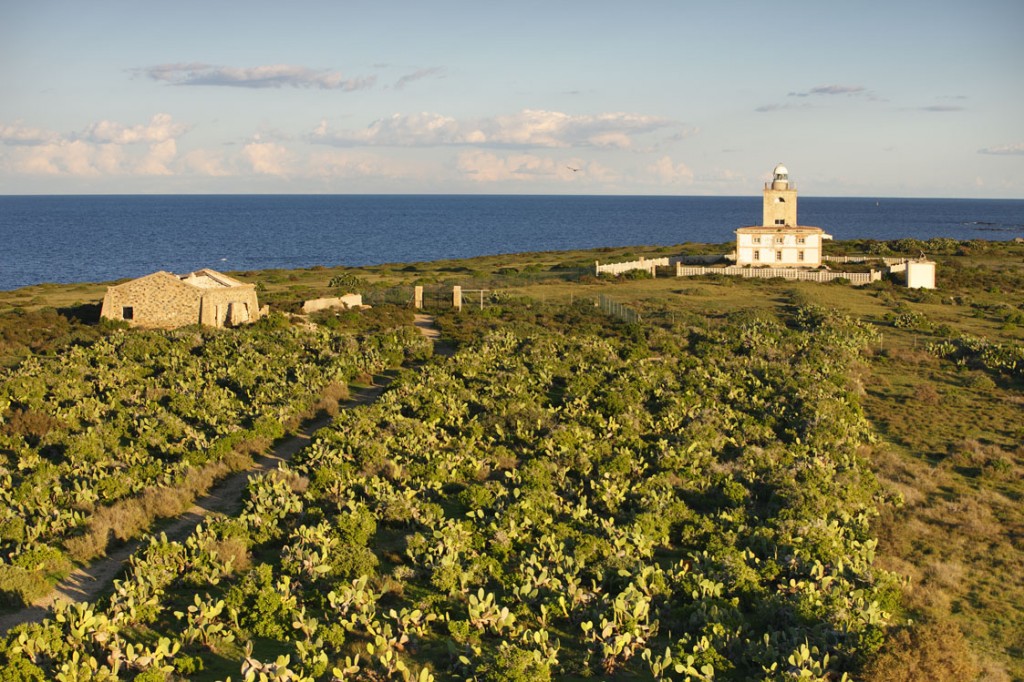
Despite the fact that the Genoese assimilated and shifted their language into Valencian and, later on, Spanish, the Genoese descent of the settlers can still be noticed today in the surnames of Italian origin common on the island. The island is twinned with Carloforte, in the Sardinian San Pietro Island, which was also populated with Genoese from Tunisian Tabarka.
The gateways are still visible and so are the Governor's House (currently a hotel) and the church of St Peter and St Paul, concluded in 1779. In 1850 the governor and the garrison were removed. At the end of the 19th century, the island had a population of around 1,000 people mainly devoted to fishing. Nowadays, the permanent population is around 50, making Tabarca the smallest permanently inhabited Spanish island, although this number is multiplied during the tourist season in Summer.
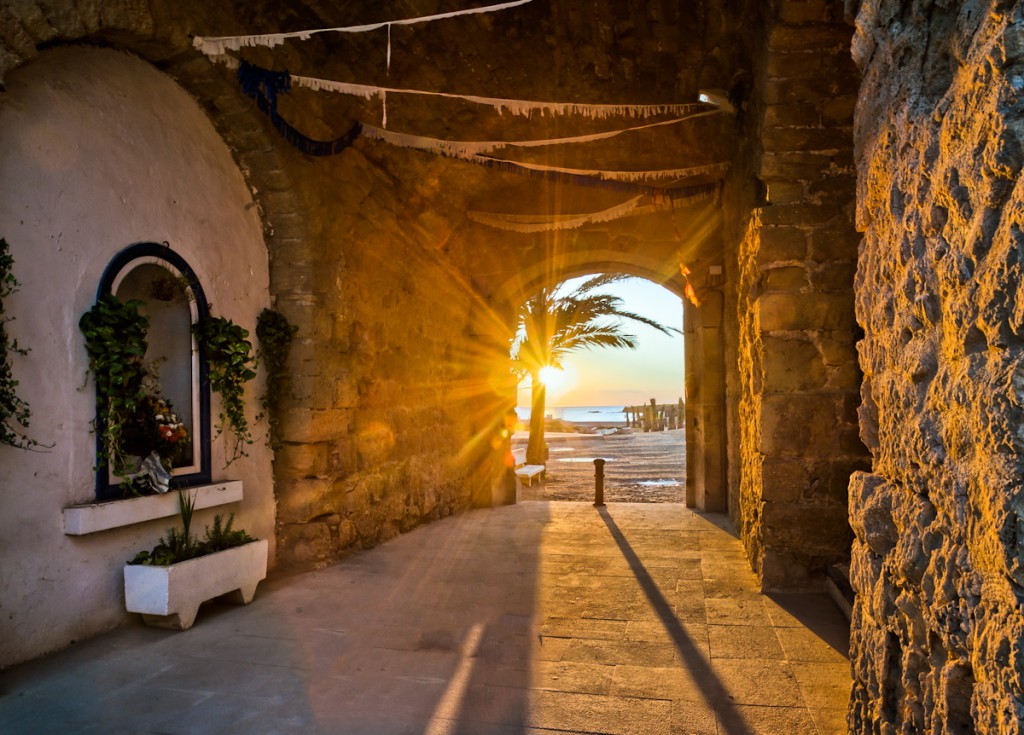
The main activity of the local population is fishing, with the catch brought to Santa Pola's fish market, but tourism becomes the most important resource during the peak season.
Tabarca is also a protected marine reserve called “Reserva marina de la Isla de Tabarca”, declared a Zone of Special Protection for Birds by the EU, with a varied marine fauna (sea bass, grouper, conger eel, gilthead etc.). Very clear and unpolluted waters surround it. Materials of volcanic origin, on top of which limestone and quaternary deposits accumulated over time, form this tiny island.
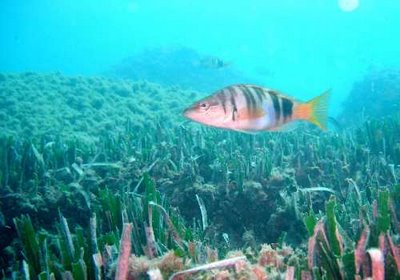
Tabarca was the last Spanish Mediterranean location where the critically endangered Mediterranean monk seal successfully bred before it became extinct in the 1960s. This proves the high quality of the waters around the island in terms of marine ecology. The waters around Tabarca were declared a Marine reserve in 1986, the first of its kind in Spain. This status was mainly granted due to its submarine posidonia prairie, which is the largest in the Spanish Mediterranean and has an extraordinary ecological value in terms of marine fauna and flora.
In order to both enhance the marine biodiversity and protect it from fishing, an artificial reef was laid near the island by the Marine Reserve authorities.
